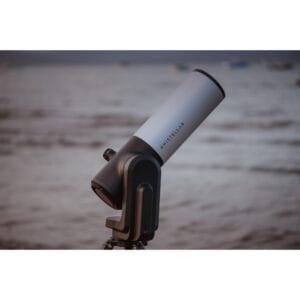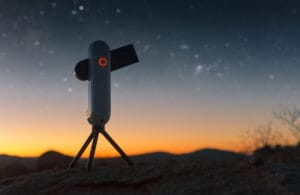For the first time in history, the Neptune aurora has been observed – not by chance, but thanks to a collaboration between the most powerful space telescopes ever built: Hubble and James Webb.
What you see in the right photo is not a visual distortion, but a combination of visible light and infrared data. Together, they bring a mysterious, ice-cold world suddenly to life.

Credit: NASA, ESA, CSA, This image was created from Hubble and Webb data from proposals: 17187 (N. Rowe-Gurney) and 1249 (L. Fletcher). Image processing: Alyssa Pagan (STScI).
Where Do the Northern Lights Form on Neptune?
On Earth, the northern and southern lights appear around the magnetic poles when charged solar particles collide with oxygen and nitrogen atoms in the atmosphere. This produces the familiar green and purple glow.
But Neptune behaves differently. Its atmosphere is hundreds of degrees colder than expected, which has kept the phenomenon hidden from view until now.
The James Webb Space Telescope (JWST) has changed that. Using the Near-Infrared Spectrograph (NIRSpec), auroral emissions were observed at unexpected latitudes – far from the poles. Webb also discovered a strong presence of the molecule H₃⁺, a chemical signature of active auroras.
This is revolutionary. It proves that even the most distant planet in our solar system is affected by space weather – and gives us new insights into how magnetic fields work on other worlds.
What Makes Neptune so Unique?
Neptune is the eighth planet from the sun and is located at an average distance of 4.5 billion kilometers. It is an ice giant, composed of a core of rock and metal, surrounded by water, ammonia, and methane.
The blue color comes mainly from methane in the atmosphere, which absorbs red light and reflects blue.
What many don’t know: Neptune has the fastest winds in the solar system, up to 2,100 km/h. Additionally, the planet rotates around its axis in just 16 hours, contributing to its dynamic weather patterns.
Its magnetic field is extremely tilted: it’s offset by 47 degrees from the rotation axis. As a result, auroras appear in completely unexpected places – a unique feature in the solar system.
A Look Back: Neptune through Voyager 2
Beyond the new insights from Webb and Hubble, there’s also a historical perspective. In 1989, Voyager 2 flew by Neptune – the only space probe ever to visit the planet up close.

Comparing with modern images shows how far our technology has advanced: from visual storms to molecular-level chemical analysis. Yet one thing remains the same: Neptune keeps surprising us.
What Can Amateur Astronomers Do with this?
Neptune, with a visual magnitude of 8, isn’t visible to the naked eye but can be seen with a suitable telescope. Want to locate the planet yourself? These are excellent choices:
- Celestron StarSense Explorer Dobsonian 130/650 – convenient with its app support.
- Bresser Dobsonian 150/1200 – provides enough light gathering for a sharp blue point in the sky.
Smart telescopes like the Seestar S50 can find Neptune automatically; visually you’ll see a small blue disc – no details, no auroras. But the science behind it makes it magical. The idea that you’re looking at an active, stormy world 4.5 billion kilometers away… that changes stargazing forever.
Check out our planet viewing telescope guide!
What Does this Mean for Astronomy?
The discovery of auroras on Neptune is more than just a visual highlight. It shows that even the coldest, most remote worlds are influenced by solar particles.
This not only helps us better understand Neptune’s behavior but also has implications for the study of exoplanets, space weather, and magnetic dynamics in general.
Summary
- Neptune is visible with a 6- to 8-inch telescope – a blue dot with a big story.
- Auroras have been directly observed on the ice giant for the first time.
- Due to the tilted magnetic field, they appear in unexpected places.
- Webb detected H₃⁺ – chemical evidence of active space weather.





